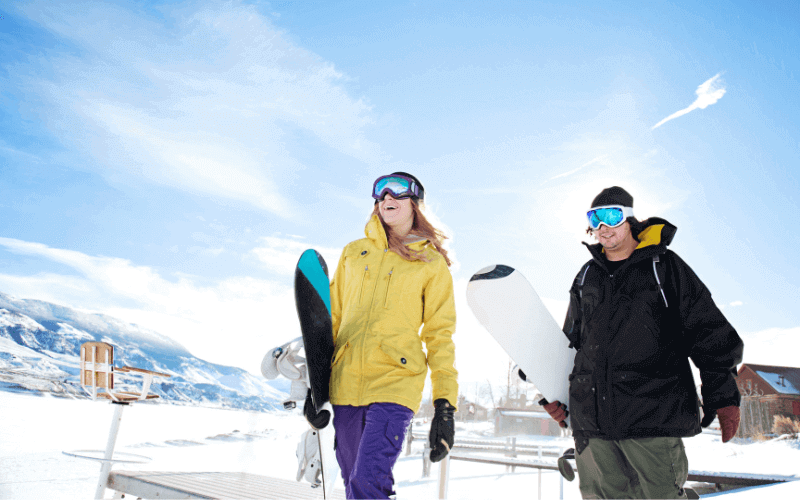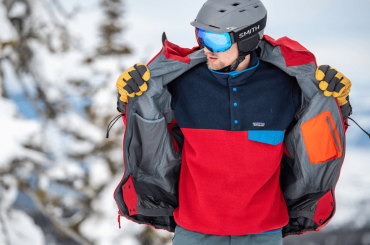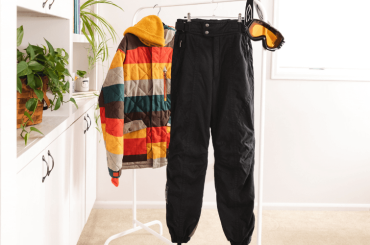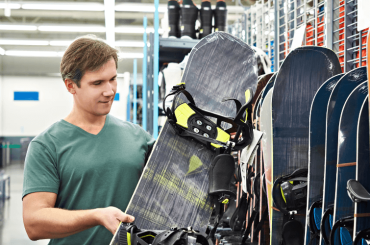There are a million different things to consider when you’re buying your first snowboard binding. One of the most critical decisions is what angle to set your bindings at.
This blog post will cover all mountain and beginner binding angles. You’ll learn about how they work and why they matter.
By the time you finish reading this post, you’ll be able to confidently select the perfect bindings for your riding style!
Snowboard binding angles are all mountain
The three main types of binding angles for all mountain/snowboard bindings are 0°, -6° and -12°. The most common binding angle for all mountains is 0°. This is because it is the least aggressive and offers the most support for someone who is just starting.
However, as you become more aggressive and skilled, you may want to consider -6° or -12° binding angles.
Most beginners start with a stance width of around 20 inches (51 cm). This will give you a good balance of stability and maneuverability. From there, you can experiment with different angles to find what feels comfortable for you.
A good rule of thumb is to keep your front binding angle around 15 degrees and your back binding angle around 30 degrees.
Different Binding Angles for Different Types of Terrain
There is no definitive answer to this question since different people may have different preferences for what binding angles they like to use on different types of terrain.
Some people may prefer steeper angles for powder skiing while others may find that too aggressive and prefer shallower angles for better maneuverability on groomed slopes.
Ultimately, it is up to the skier to experiment with different angles and find what works best for them on different types of terrain.
Why is it important to set the correct angle on your bindings?
When you are setting the angle on your bindings, it is important to make sure that the angle is not too big or too small.
If the angle is too big, it can cause the ski to release from the binding too easily and if the angle is too small, it can make it difficult to release from the binding when you need to.
It is important to set the correct angle on your bindings because it can help prevent injury and keep you more comfortable while riding.
The wrong angle can cause your binding to release unexpectedly, which can lead to a fall. It can also make it difficult to control your board, which could result in a crash.
Additionally, incorrect angles can put unnecessary strain on your joints and muscles, which can cause pain or discomfort. Setting your bindings at the proper angle will help you avoid all of these potential problems.
How do you determine the best angle for your bindings?
There are a few things that you will need to take into account when trying to determine the best angle for your bindings.
- First, you will need to consider the type of riding that you will be doing. If you plan on doing a lot of freestyle riding, then you will want to have a binding that gives you a good deal of flexibility. This will allow you to tweak your grabs and rotations more easily.
- On the other hand, if you plan on doing mostly all-mountain riding, then you will want a binding that is stiffer and offers less flex. This will give you more support when carving and hitting jumps.
- Another thing to consider is the width of your stance. A wider stance will require binding with more lateral support, while a narrower view can get away with a binding that is not as supportive.
- Finally, you will need to take into account your personal preferences. Some people prefer a softer binding for a more comfortable ride, while others prefer a stiffer binding for a better response.
How to Set Up Binding Angles for All Mountain Snowboarding?
Setting up your binding angles for all mountain snowboarding is a critical part of getting the most out of your setup.
There are a few different ways to go about it.
- The first thing you need to do is choose the right stance width. This is based on your height and weight. If you are a big guy, you will want a wider stance. If you are a little guy, you will want a narrower stance.
- The next thing you need to do is choose the right angles for your bindings. There are three different angles, including the highback angle, the binding angle and the stance width.
- Once you have chosen the right angles for your bindings, you need to adjust the highbacks. The highbacks are the part of the binding that goes up your leg. You will want to adjust them to be at the same angle as your legs.
- Next, you need to adjust the binding angles. You will want to adjust them so they match the angles of your highbacks.
- Last, you need to adjust the stance width. The stance width is the distance between your feet on the board. You will want to adjust it so it is comfortable for you.
Now that you have your bindings, you are ready to go out and enjoy the mountain!
FAQs – Snowboard binding angles are all mountain
How do you set up snowboard bindings for carving?
There are a few things you need to do to set up your snowboard bindings for carving.
- First, you need to make sure that your bindings are mounted correctly on your board.
- Second, you need to adjust the stance of your bindings so that they’re in the proper position for carving.
- Finally, you’ll need to adjust the tension on your bindings to ensure a good carving experience.
Should I ride a duck stance?
There’s no definitive answer to this question since it depends on personal preferences and what type of riding you’ll be doing. If you’re just starting, it might be helpful to ride in a duck stance (with your feet angled outwards) so that you have more stability and control.
Once you become more confident and comfortable on your board, you can experiment with different stance widths and angles to see what works best for you.
Why do snowboarders take one arm out of the bib?
There are 3 main reasons why snowboarders might take one arm out of the bib.
- First, it can help with balance. If a snowboarder is having trouble staying upright, taking one arm out of the bib can help them keep their center of gravity over their feet.
- Another reason is that it is the signal to other riders that they are about to do the trick. This is especially common in halfpipe and slopestyle riding, where riders need to be aware of what others are doing to avoid collisions.
- Taking one arm out of the bib can also be a communication tool between riders. If one rider wants to pass another, they will often take one arm out of the bib and wave it to indicate that they are coming through.
Conclusion
All mountain/snowboard binding angles for beginners are typically set at 15 degrees. This will give you a good starting point as you progress in your snowboarding skills.
Remember to always adjust your bindings to fit your riding style and the type of terrain you are skiing or boarding on. As with everything related to snowboarding, practice makes perfect!





